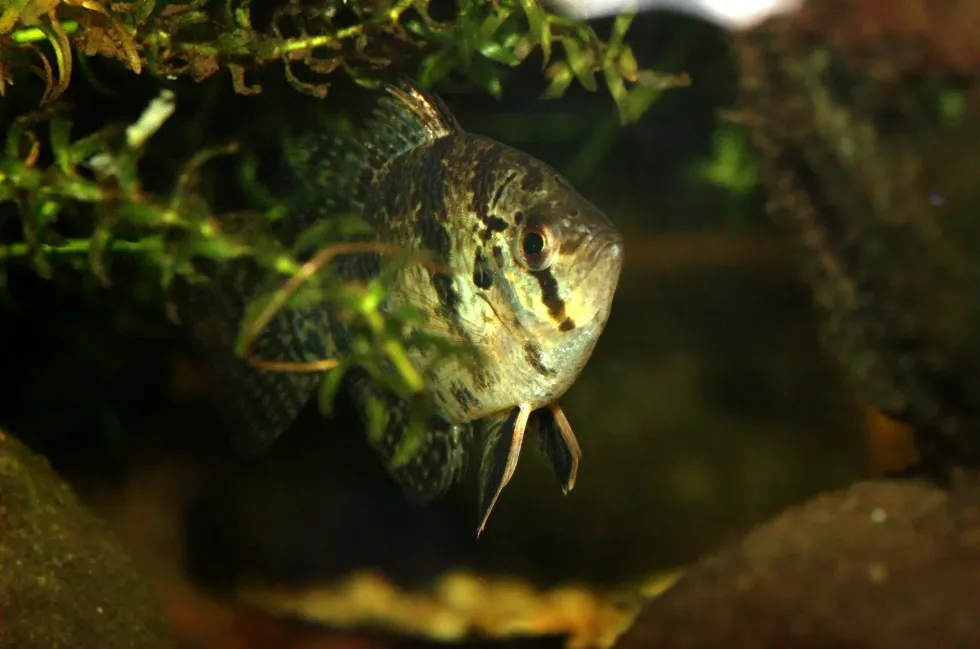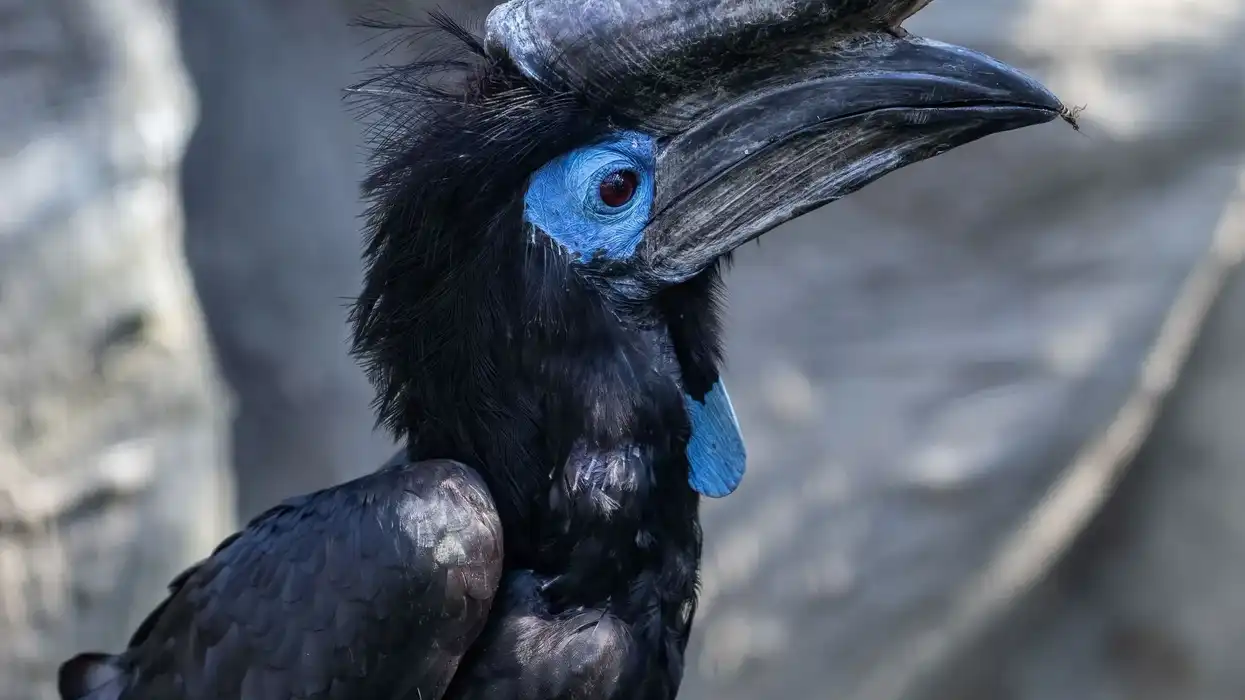Blackbanded sunfish (Enneacanthus chaetodon) or black banded sunfish are inhabitants of North American freshwater bodies. They inhabit slow-flowing rivers, streams, lakes, and ponds. They roam around the sand bed in search of their prey.
Black-banded sunfish are carnivorous fish that feed on insect larvae, aquatic insects, zooplankton, and worms. When in tanks, they cause no tantrums and eat both frozen and fresh food. Black-banded sunfish are small silver-colored fish that have yellow spots on their body.
They have magnificent fins. Both the dorsal and ventral fins have a ray structure and are big in size. In short, they are magnificent creatures in nature.
This was just the introduction. Ahead in the article, we have prepared some interesting and funny facts about this fish which will amaze you.
For more similar content, read our koi facts and rockfish facts for kids.
Blackbanded Sunfish Interesting Facts
What type of animal is a blackbanded sunfish?
The blackbanded sunfish is a small sunfish. They are inhabitants of North America and can also live in an aquarium.
What class of animal does a blackbanded sunfish belong to?
Blackbanded sunfish belong to the class Actinopterygii of ray-finned fishes. They are freshwater inhabitant fishes in the order Perciformes, family Centrarchidae, and genus Enneacanthus. Their scientific name is Enneacanthus chaetodon.
How many blackbanded sunfish are there in the world?
Blackbanded sunfish (Enneacanthus chaetodon) inhabit the freshwater bodies of North America. They are a Near Threatened species according to the IUCN Red List but inhabit their home in good numbers. Their exact population count is not known.
Where does a blackbanded sunfish live?
This banded sunfish species lives in the freshwater bodies of the North American continent. They live in water bodies with less flow velocity like slow-flowing rivers, vegetated lakes, ponds, and streams. They are a small fish species that can be kept in an aquarium as well.
What is a blackbanded sunfish's habitat?
Banded sunfish are inhabitants of North American freshwater bodies like the redbreast sunfish. Their habitat range lies from New Jersey to central Florida. In recent times, it is seen that they also inhabit water bodies in the Delaware Valley.
Who does blackbanded sunfish live with?
The blackbanded sunfish (Enneacanthus chaetodon) species is found from New Jersey to Florida. They are small and an extremely social fish species that love to stay in groups. These sunfish (blackbanded) together roam around their habitat in search of food.
How long does a blackbanded sunfish live?
The blackbanded sunfish species can live both in the wild and in captivity. In the wild and in captivity, they show a small lifespan range. This sunfish species lives up to three or four years.
How do they reproduce?
Like all fish species, blackbanded sunfish also reproduce by laying eggs. When the water temperature is perfect and all requirements are met, spawning will start.
During spawning or breeding, the males find a place between plants and make it their spawning area. After that, they attract females for breeding.
After breeding, females lay all the fertilized eggs near the plants. In the case of this sunfish species, after laying the eggs males drive the females out of the territory. Males look after their kids and supply them with food.
The eggs go through an incubation period of a week or so and then all the fry emerge. In an aquarium, it is better to remove the parents after the eggs are laid.
What is their conservation status?
According to the IUCN Red List, blackbanded sunfish fall under the conservation category of Near Threatened species. Their population is comparatively less in many places.
Blackbanded Sunfish Fun Facts
What do blackbanded sunfish look like?
The blackbanded sunfish species are small fish that live in freshwater bodies ranging from New Jersey to Florida. They are small, laterally compressed fish with a deep body. They have a rounded face with a small mouth portion.
Their lower jaw is big and extended upwards. They have big fins.
The dorsal fin is situated at the mid of their back and its size is good. They have amazing pectoral and pelvic fins, the pelvic fin being bigger in size. Their caudal fin or tail is somewhat rounded.
The color of their body is silver with yellow-orange spots on it like spotted sunfish. They have some black vertical lines on their body that look like bands.
This is the characteristic feature that gives them their name 'blackbanded sunfish'. There are several vertical lines on their body. Their body length is around 2-3.1 in (5-8 cm) with a negligible amount of body weight.

How cute are they?
They are one of the cutest fish species. These adorable little fishes live along the sand bottoms of rivers and lakes, searching for food.
How do they communicate?
Blackbanded sunfish are a species of fish and fish can't communicate by making sound. Fish species communicate through body language and by the release of chemicals like pheromones. They also have a vertical line segment organ for reading minute vibration in water.
How big is a blackbanded sunfish?
Blackbanded sunfish are a very small sunfish species that inhabit freshwater rivers and lakes from New Jersey to Florida. They have an average body length of around 2-3.1 in (5-8 cm) and their body weight is negligible. Their body length is similar to blue-spotted sunfish.
How fast can a blackbanded sunfish swim?
There is no exact record of how fast they can swim but it is likely that they are a very agile fish species.
How much does a blackbanded sunfish weigh?
Blackbanded sunfish have a small body but big fins. All of their fins including tail are magnificent looking. Their average body length is around 2-3.1 in (5-8 cm) and their body weight is somewhat negligible.
What are the male and female names of the species?
There is no specific names assigned to the males and females of this species. They are commonly known as blackbanded sunfish. However, they show sexual dimorphism. Males are bigger than the females and show brighter colors on their body. Males have larger fins too.
What would you call a baby blackbanded sunfish?
Like all other fish babies, baby blackbanded sunfish are also known as fry or young ones. After the eggs are laid, their mothers are driven away and their fathers take care of them. After about a week, they hatch from the eggs and can be seen swimming around.
What do they eat?
Blackbanded sunfish enjoy a carnivorous diet. Their diet includes crustaceans, aquatic insects, zooplankton, insect larvae, and bacteria. They live in slow-flowing water bodies from New Jersey to Florida and can be found near the sand bed. There they search for their food.
Are they dangerous?
There are too small to prove danger for humans. They are small carnivorous fishes who live in groups. They can be aggressive at times when protecting their breeding area.
Would they make a good pet?
Yes, they would make a wonderful pet. They are also kept in aquariums, however the owner needs to be a bit careful.
Did you know...
The popular ocean sunfish has no tail and has unusual skeletal structure.
Are blackbanded sunfish endangered?
No at this moment. Blackbanded sunfish are a Near Threatened species in the conservation status list. Their numbers are decreasing because of habitat loss and the usage of chemicals in water.
Keeping blackbanded sunfish
Blackbanded sunfish inhabit cold water. The temperature of the water should be maintained and it needs to be slightly acidic. They are no trouble to feed as they readily accept frozen bloodworm, black mosquito larvae, Daphnia, and brine shrimp. Keeping and taking care of them is easy as they cause very few problems.
Here at Kidadl, we have carefully created lots of interesting family-friendly animal facts for everyone to discover! For more relatable content, check out these Tang fish facts and spotted trunkfish facts for kids.
You can even occupy yourself at home by coloring in one of our free printable sunfish coloring pages.
Main image by Tino Strauss
Second image by Tino Strauss









